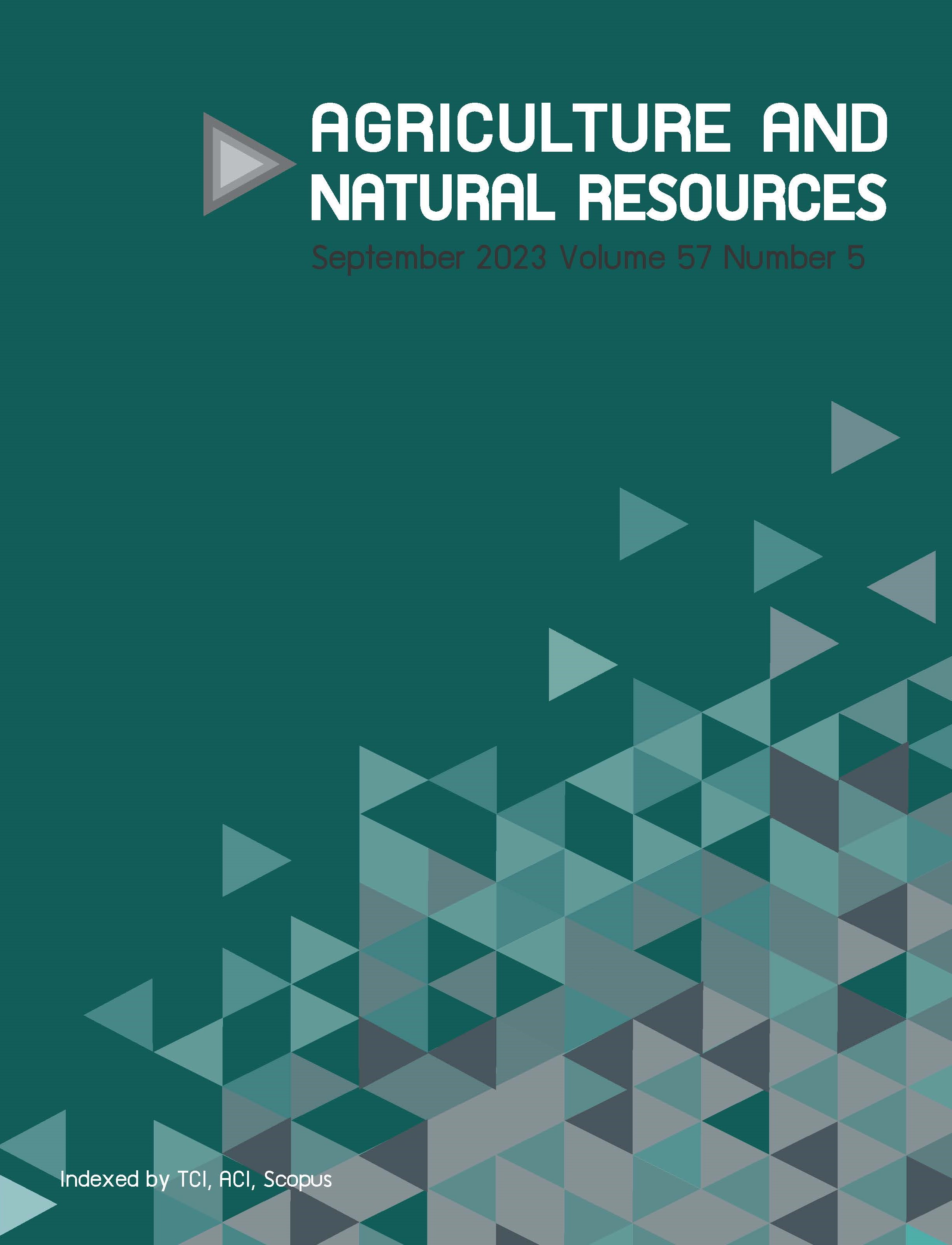Evaluating elite genotypes in diverse environments for cane and sugar yield stability and adaptability in Thailand
Keywords:
Additive main effect and multiplicative interaction (AMMI) biplot, Genotype × environment interaction, Multi-environment trials (METs), Ratooning ability, Sugarcane breedingAbstract
Importance of the work: The genotype-environment interaction (GEI) influences the stability and ranking of genotypes investigated in various environments.
Objectives: To identify significant variance in the GEI in multi-environment trials and to assess the performance and stability of elite sugarcane clones under various agro-ecological environments.
Materials & Methods: Eight top sugarcane clones were examined in 22 multi-location yield trials carried out from 2014 to 2017. The additive main effect and multiplicative interaction (AMMI) biplot was used to conduct stability assessments for cane yield, sugar yield and commercial cane sugar cultivars.
Results: Reducing the number of crop years was the most effective option because the variance component of genotype × location was larger than for genotype × crop year and the fact that all traits showed a significant association between the second and third crop classes. There was a significant relationship between cane yield and sugar yield for two-and three-crop classes. The correlation ranking revealed a substantial association between both parameters, with correlation coefficients values for cane yield and sugar yield of 0.9286 and 0.9524, respectively These values were statistically significant.
Main finding: By indirectly choosing across environments, the AMMI and genotype and environment interaction biplots facilitated the selection of stable and high-yield sugarcane genotypes and reduced the necessity for regional trials, which saved resources. The general and specific adaption cultivars that produced high cane and sugar yields were Kps01-12, KK3, LK92-11 and TBy28-0348
Downloads
Published
How to Cite
Issue
Section
License
Copyright (c) 2023 Kasetsart Universityonline 2452-316X print 2468-1458/Copyright © 2022. This is an open access article under the CC BY-NC-ND license (http://creativecommons.org/licenses/by-nc-nd/4.0/),
production and hosting by Kasetsart University of Research and Development Institute on behalf of Kasetsart University.







